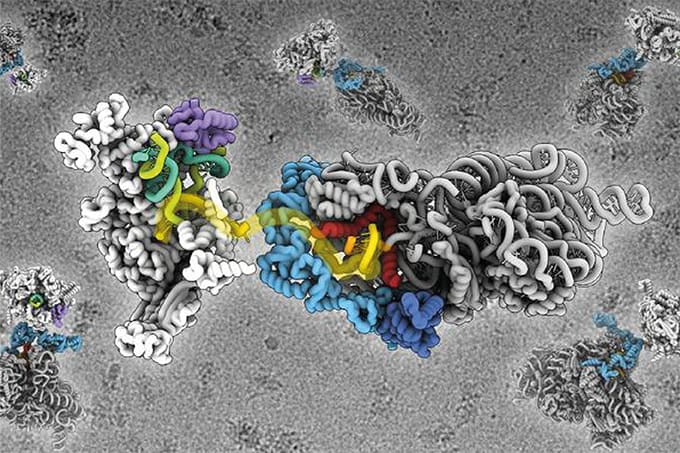Proteomics research is transforming personalized medicine by uncovering the diversity, function, and interaction of proteins involved in biological processes. These molecular insights provide a foundation for tailoring medical diagnostics and treatments. Many human diseases are caused by abnormal protein function, and over 95 percent of drugs target proteins. Accurate diagnosis is critical to guide targeted interventions – but for many diseases, their molecular etiology remain elusive due to the extreme complexity and heterogeneity of biological systems. Most diseases are multifactorial, involving many interacting components.
Biomarkers are tools – spanning a huge range of measurable characteristics and tests – that are critical to diagnosing diseases, tracking their progression, guiding therapy selection, and evaluating treatment efficacy. However, bringing a biomarker from concept to clinic requires initial discovery in human cohorts using a wide array of methods, followed by validation in independent cohorts and functional studies (e.g., cell assays or animal models), and finally, prospective clinical trials for regulatory approval. In practice, most candidates fall short of the sensitivity and specificity needed for early detection, disease subtyping or tissue-specific analysis and interpretation, thereby limiting their clinical utility. Medical diagnostics using biological fluids – such as blood, urine, saliva, cerebrospinal fluid (CSF), sweat, and sputum – face significant challenges, including: a lack of comprehensive biomarker panels; inter-individual variability; technical and analytical limitations; regulatory hurdles; and global inequities in access and affordability.

Technologically, enzyme-linked immunosorbent assays (ELISAs), though widely used to quantify proteins and peptides, suffer from drawbacks such as limited dynamic range, cross-reactivity, and matrix interference. ELISA results can be unreliable, risking misdiagnosis and inappropriate treatment. A major issue is the assumption that antibodies can reliably distinguish between similar molecules – when in fact, they often cannot. ELISAs typically fail to differentiate subtle molecular differences, such as between isoforms, particularly because of its single-dimensional format limitation.
One persistent shortcoming in clinical proteomics is the inability of current diagnostic platforms to comprehensively resolve protein post-translational modifications (PTMs) and proteoforms – distinct forms of a protein arising from genetic variation, alternative splicing, or PTMs. These modifications are common and often alter protein structure and function; when dysregulated, they can drive disease. For instance, detecting specific proteoforms of alpha-1-acid glycoprotein (AGP) or prostate-specific antigen (PSA) can improve diagnostic accuracy. Likewise, glycated hemoglobin (HbA1c) is essential in diabetes management, anti-citrullinated protein antibodies (ACPA) assist in diagnosing rheumatoid arthritis, and phosphorylated tau (P-tau) is emerging as a valuable marker for early-stage neurodegeneration. Shifts in proteoform levels or patterns can signal disease onset or progression – enabling earlier and more precise diagnoses.
To overcome the limitations of single-dimensional techniques, two-dimensional capture-separation technologies offer greater accuracy by isolating and separating highly-predictive biomarkers from structurally similar, closely-related, or even unrelated molecules. High specificity in protein recognition is critical for reliable diagnostics and therapeutic monitoring. Among these methods, Immunoaffinity Capillary Electrophoresis (IACE) stands out for its exceptional analytical sensitivity and specificity.
IACE combines an initial affinity capture step – using ligands such as antibodies, nanobodies, aptamers, lectins, multimodal peptides, ankyrons, affimers, and other molecules having chemical attraction to one or more moieties of another molecule – with high-resolution capillary electrophoresis to isolate, concentrate, separate and detect target biomarkers, including a wide range of chemical-biochemical substances, cellular-subcellular entities, and vesicles and micro-nano-particulate matter. This powerful two-dimensional technique can distinguish closely related molecules, including isozymes, proteoforms, and metabolites. When coupled to laser-induced fluorescence (LIF) and/or mass spectrometry detection systems, IACE can provide sub-nanomolar limits of detection.
Analytical science plays a pivotal role in advancing diagnostics, offering tools like IACE to precisely quantify specific molecules in complex biological matrices. By enhancing diagnostic accuracy and enabling integration into low-cost, point-of-care testing (POCT) platforms, IACE presents a compelling opportunity. Such decentralization could significantly reduce healthcare costs and extend access to high-quality testing – contributing to improved global health equity.




